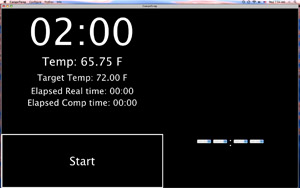March Newsletter
Travel, Full Moon, Food for Thought
Travel, Full Moon, Food for Thought
Archival Inkjet Prints
When I “test” a new paper, or one I haven’t tried in a long time, the first thing I like to do is see how it “feels” compared to a paper I’m used to.
When I got my first sample of the Adox paper, I had just finished producing a batch of Ansel Adams’ Moon and Half Dome prints for The Ansel Adams Gallery. Since the negative (made on 120 Adox R17 12/28/1960) was still in my Omega D5500 enlarger, I had a perfect opportunity to see exactly how the paper would perform with a high quality image I had printed many many times.
The first result: an absolutely lovely image. It required no change in the “no filter” setting I usually use with this negative on Ilford Multigrade FB – so “normal” contrast seemed to be right on. It had a beautiful gradation of tonality from blacks to clean whites. It seemed a bit faster than the Ilford, but for the Adox test I was using a higher concentration of Dektol than I had used for the production printing.
…
Alumni Gallery, Darkroom Products, Workshops
Season’s Happenings in Yosemite
Yosemite, Digital Thoughts
Zinfandel, Tuscany, Quickload
 Workshop alum and Stanford scientist, Curt Palm, has created a new darkroom timer that significantly “one-ups” the popular Zone VI Compensating Developing Timer.
Workshop alum and Stanford scientist, Curt Palm, has created a new darkroom timer that significantly “one-ups” the popular Zone VI Compensating Developing Timer.
CompnTemp ® is software rather than hardware and is available for both Windows and Mac computers. I set up a small shelf in my darkroom for my Mac Powerbook and all I have to do to get going is plug in the accessory USB temperature probe and cover the screen with red plastic.
What sets CompnTemp apart from ANY other timer is that is completely user-programmable. if you want your target temperature to be 73 degrees instead of 68 that’s fine. If you want it to count UP instead of DOWN, that’s fine, too.
You can save profiles so you can toggle from one group of settings for prints to another set of preferences for film. It even lets you customize the compensation curves. It also gives you a continuous read-out of the ACTUAL temperature.
…
Print spotting is something none of us can avoid having to take to task on some level. Some of us are better at it than others, some just can’t get the hang of it at all. Some are good at it but just don’t have the time or patience for it. If you or anyone…
Photoshop and Photography – What is a Photograph?
On February 25th, 2010, technology writer David Pogue posted a thought provoking commentary for the New York Times on the subject of Photoshop and Photography – What is a Photograph. I replied with some thoughts of my own, and David graciously gave me his permission to quote him in my news letter and on my site. (I added the photos, they weren’t in the original article).
Photoshop and Photography: When Is It Real?
By DAVID POGUE
In the March issue of Popular Photography magazine, the editor’s note, by Miriam Leuchter, is called “What Is a Photograph?”
You’d think that, after 73 years, a magazine called Popular Photography would have figured that out. (Ba-da-bump!)
Actually, though, the editorial is about the magazine’s annual Reader’s Photos Contest. This year, in two of the categories, the winners were what the magazine calls composites, and what I call Photoshop jobs.
One photo shows a motorcyclist being chased by a tornado; another shows a flock of seagulls wheeling around a lighthouse in amazingly photogenic formation. Neither scene ever actually existed as photographed.
Now, in my experience, photographers can be a vocal lot. And a lot of them weren’t crazy about the idea of Photoshop jobs winning the contest.
…
Read More